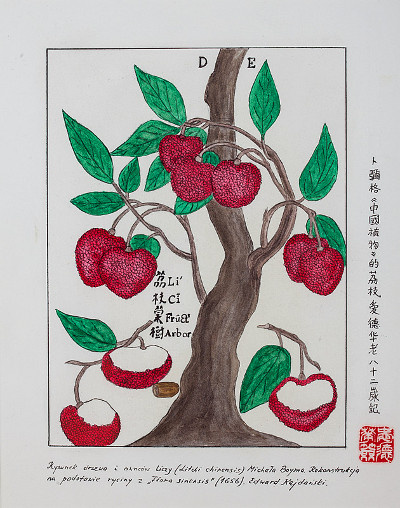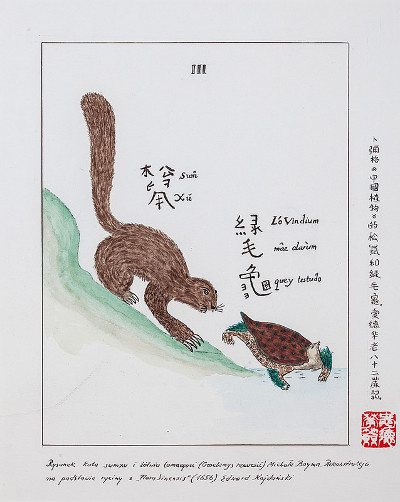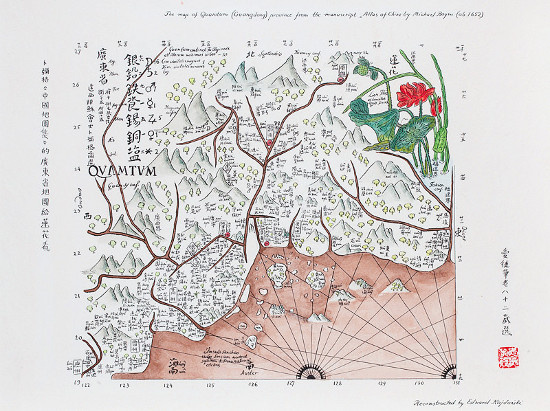
This exhibition showed the very early stage of direct contacts between China and Poland, dated back to the 17th century, and the activities and works of the Polish scientist Michał Piotr Boym, who among others Polish and foreign scientist, travelers and missionaries, explored China and let European know more about Chinese people, culture and achievements of that time. Boym devoted his life to introducing the knowledge of China to the West.
The scientific value, artistry and beauty of Boym's works will contribute to a better mutual understanding of cultures and traditions between China and Poland, as well as two countries' current co-operation and relations.
Preface: To know each other better (by Krzysztof Ciebień, Consul General of Poland in Guangzhou)There is no better way to understand other nations and culture than direct contacts. This was important in the past and that it remains today, so there is growing awareness of the importance of cross-culture exchanges. With the commitment of the Consulate General of Poland in Guangzhou to be a platform for cross-cultural communication and exchanges between Poland and China and our two great nations, I am very proud to present to you the exhibition devoted to the very early stage of direct contacts between our two countries, dated back to the 17th century, and the activities and works of the Polish scientist Michał Piotr BOYM, who among others Polish and foreign scientist, travelers and missionaries, explored China and let European know more about Chinese people, culture and achievements of that time.
Boym was born in 1612 and educated in Poland. He became a priest in 1631. After almost a decade of intensive studies, in 1643 he embarked on a voyage to Asia. He learned Chinese language in Macau and began studying Chinese geography, medicine, pharmacy, customs and wildlife. He lived and worked on Hainan Island and in Guangdong during the reign of the Emperor Yongli, the last ruler of the Ming Dynasty, still controlling parts of the South China. Recognized as a loyal friend of the Ming Dynasty, Boym was sent with the diplomatic mission to Europe to present the situation in China to the Pope. He was received by Pope Alexander VII on December 1655. By that time the European courts had already abandoned the cause of the Southern Ming Dynasty and the Pope could not offer any practical help to the Emperor Yongli, but prayers. In March 1656 Boym left Europe and begun his return trip to China. Unfortunately, on June 22, 1659, he died in Guangxi, before reaching the Emperor's court.

mango

lychee
The researcher, explorer and diplomat, Boym devoted his life to introducing the knowledge of China to the West. He is remembered for his works describing the flora, fauna, history, traditions, science, inventions and customs, as well as Chinese political system. He prepared a large collection of maps of mainland China with the correct positions of many Chinese cities. The best known of Boym's works is the Flora Sinensis ("Chinese Flora"). The book was the first description of an ecosystem of China published in Europe.
I am confident that the exhibition will inspire you to take an interest in the history of contacts between Poland and China, as well as between Europe and China. I also believe that the scientific value, artistry and beauty of Boym's works will contribute to a better mutual understanding of our cultures and traditions, as well as our current co-operation and relations, whose 65th anniversary we celebrate this year.

Squirrel and furry green turtle

Lotus Guangdong province map
About the exhibition
Curator: Edward Kajdanski
Duration: June 7-25, 2014, 10:00-22:00
Venue: Kui Yuan Gallery
Tel: 020-87659746
Add: No.9, Xuguyuan Road, Yuexiu District, Guangzhou
Courtesy of the artist and Kui Yuan Gallery.




























